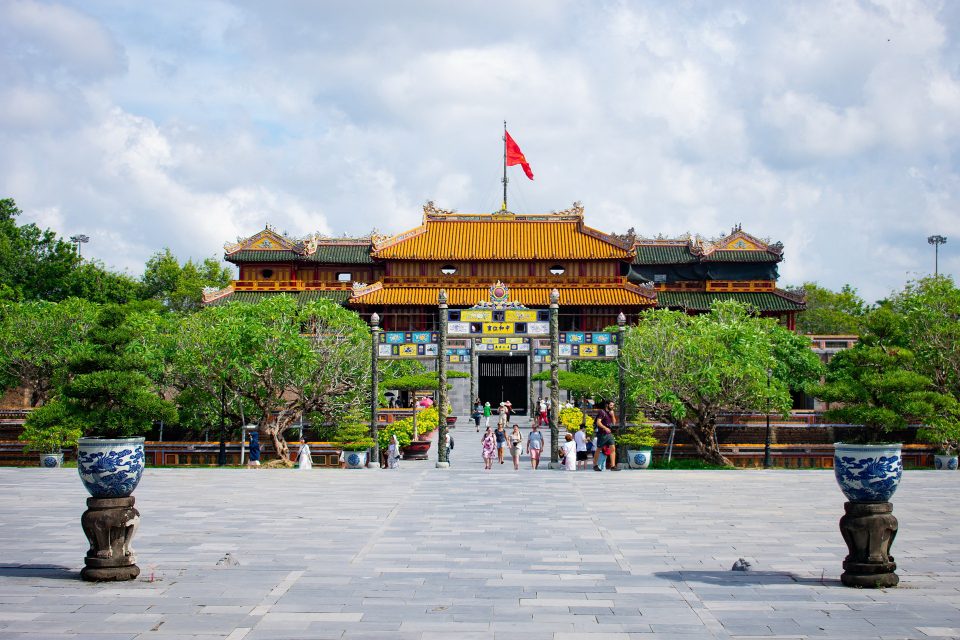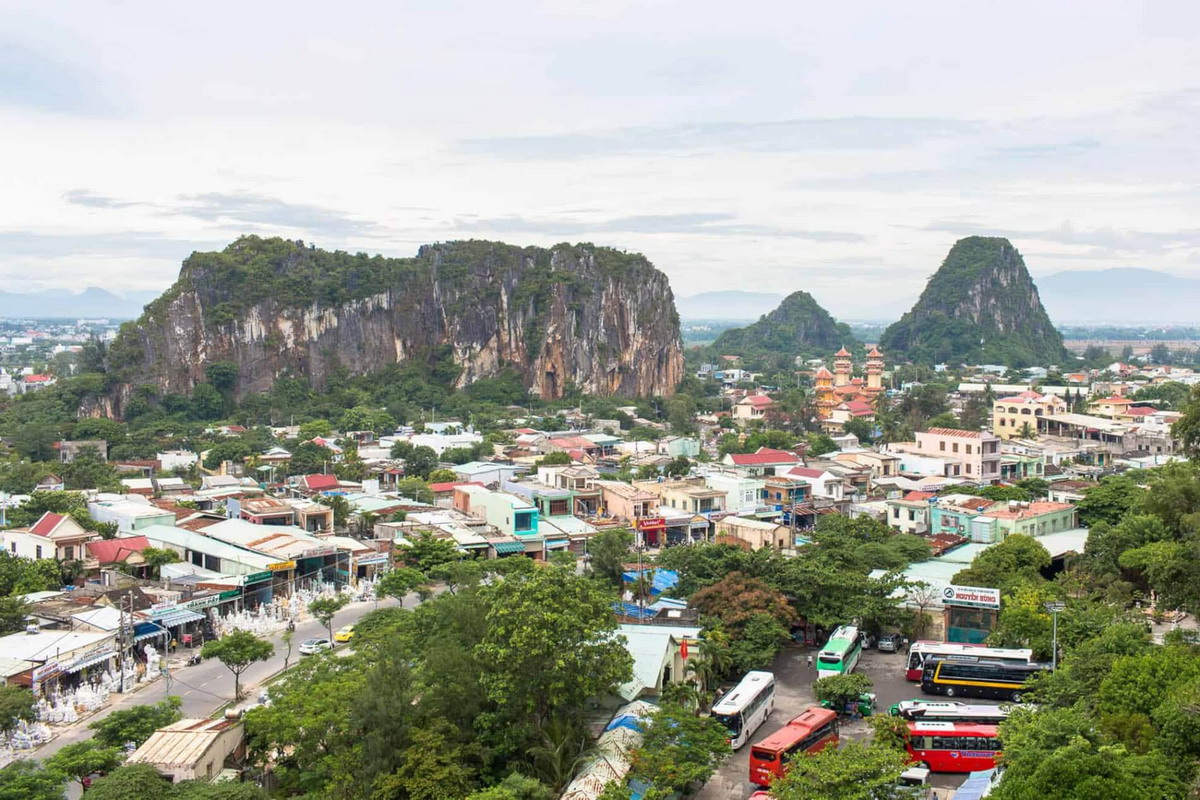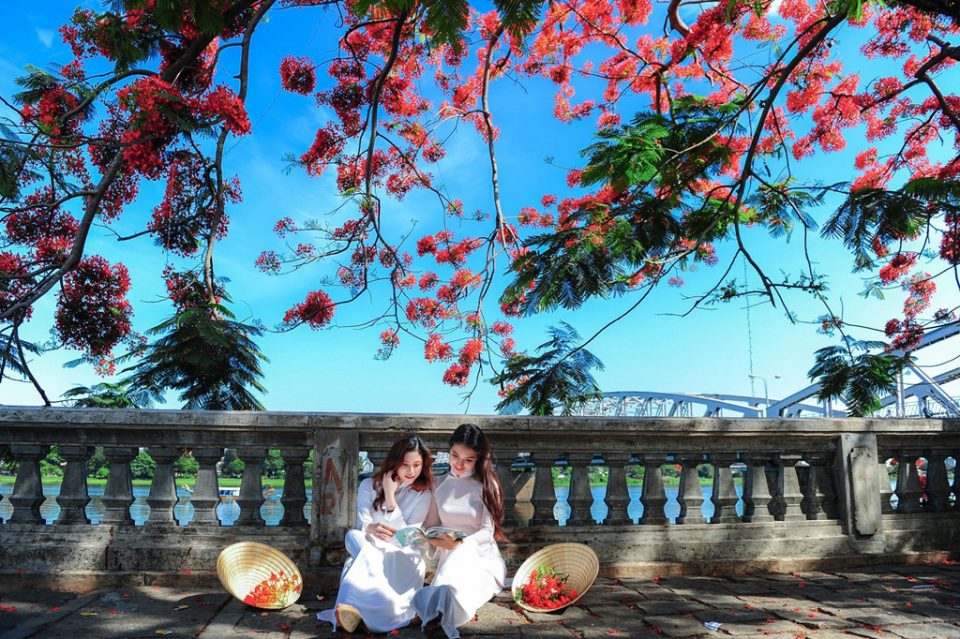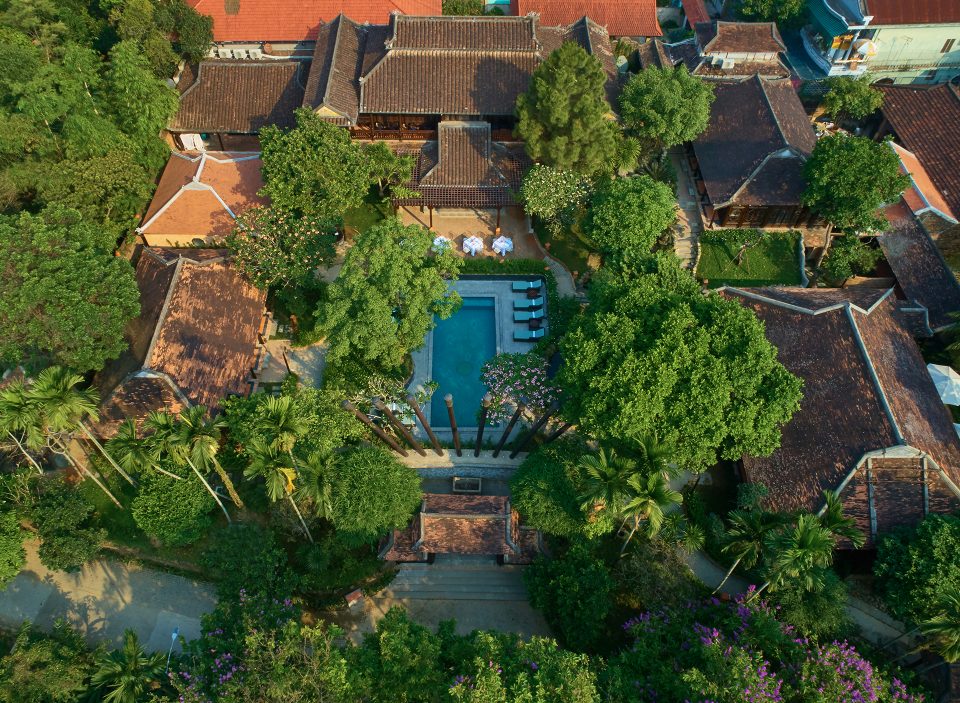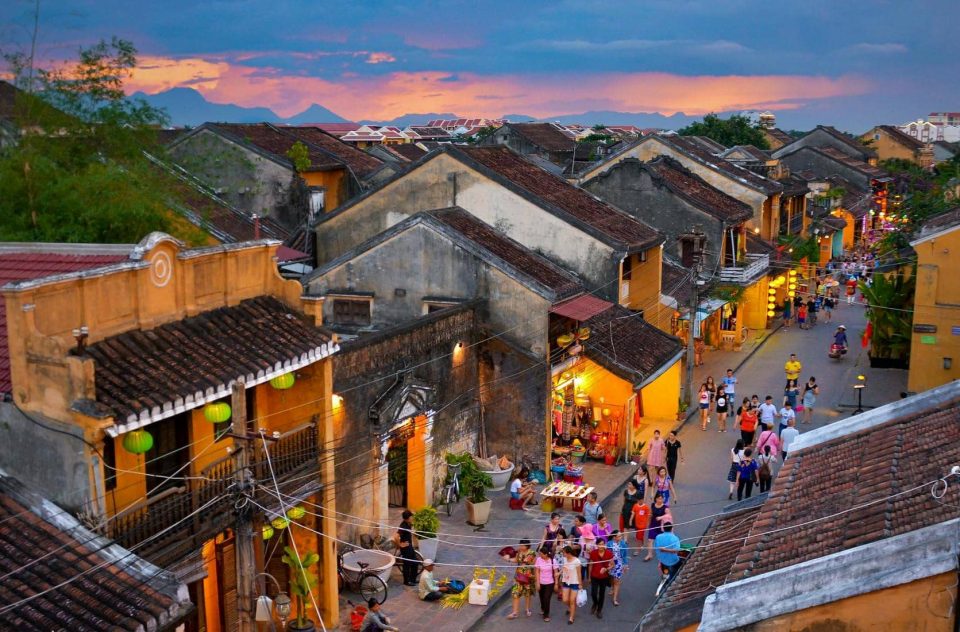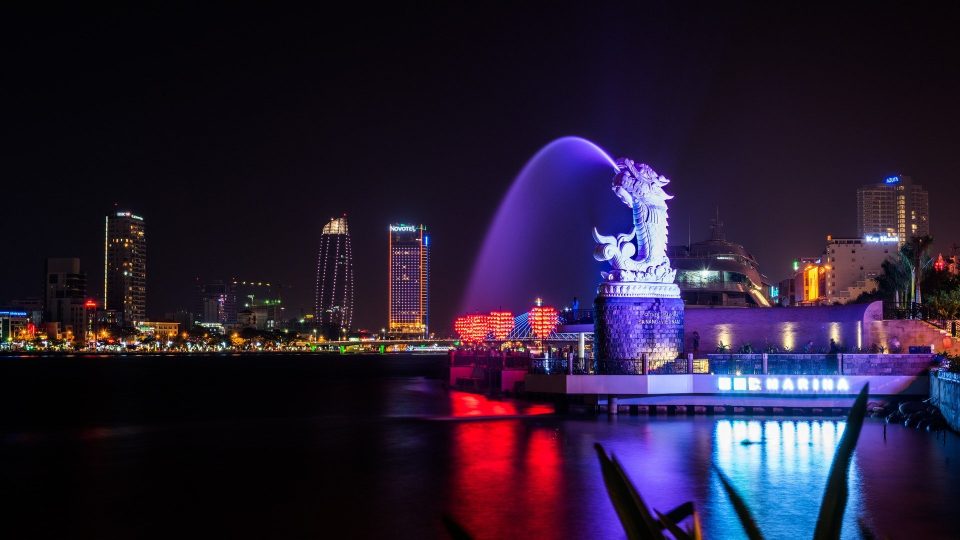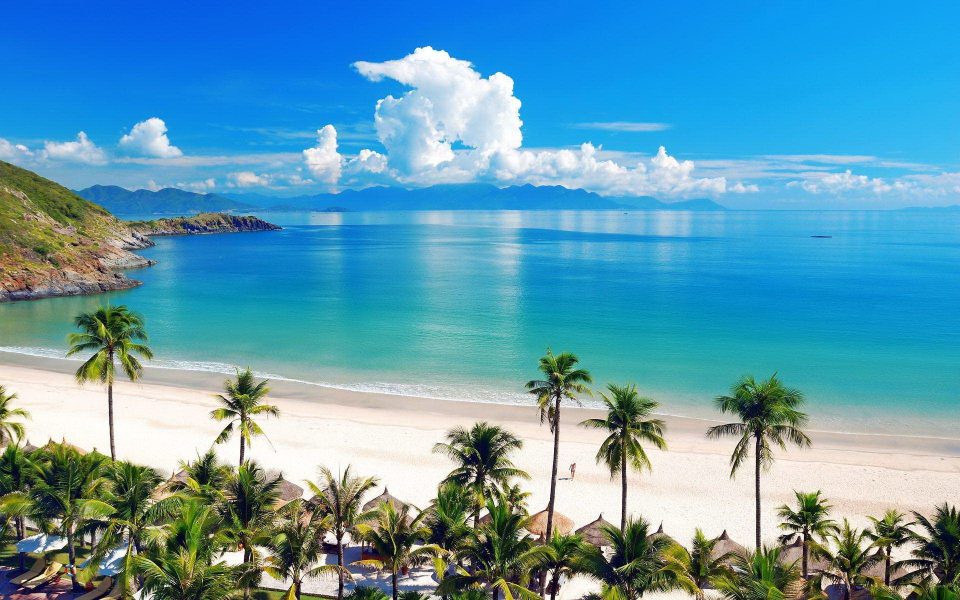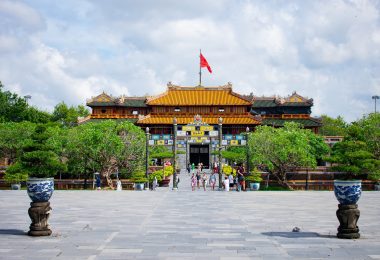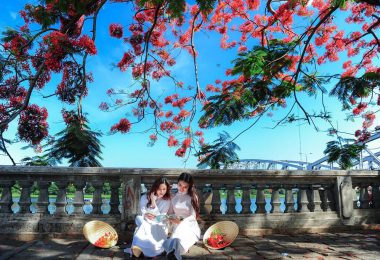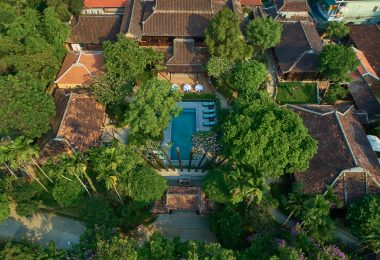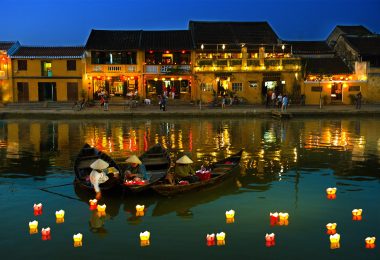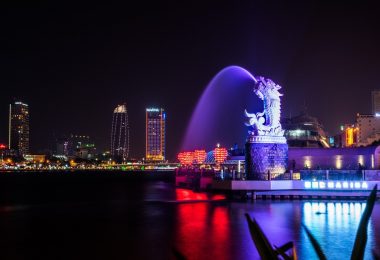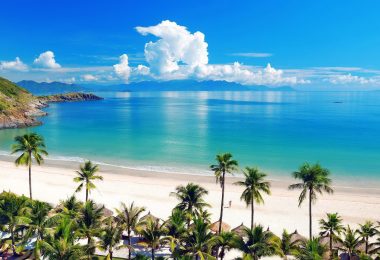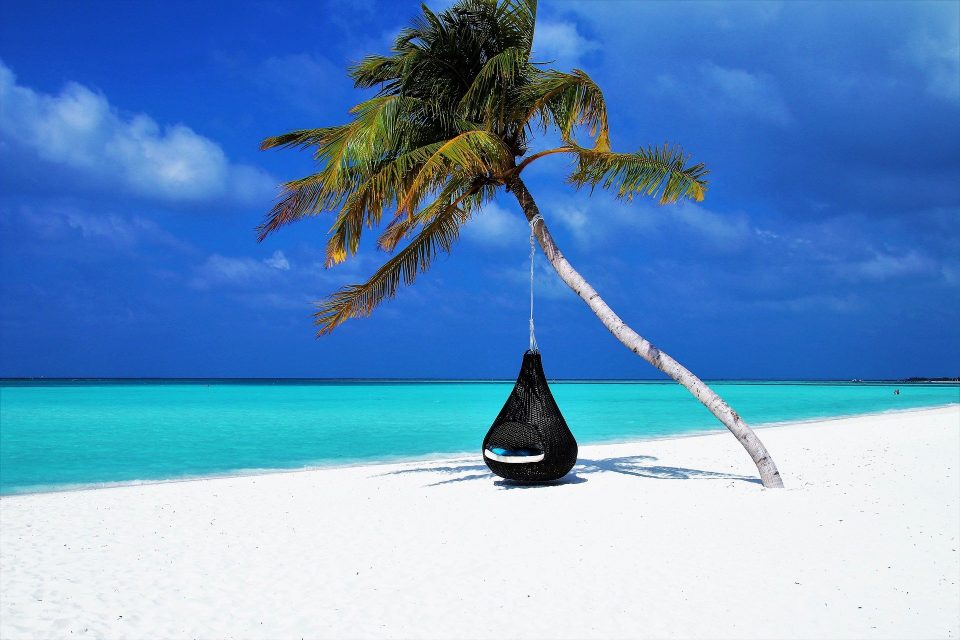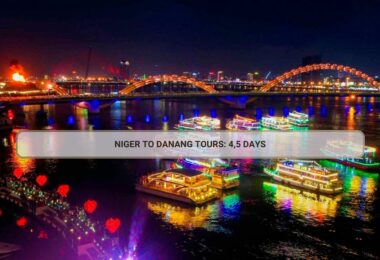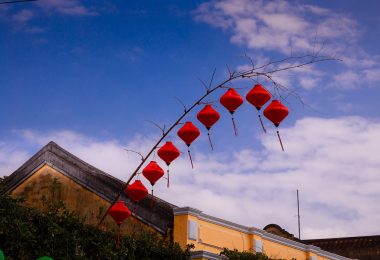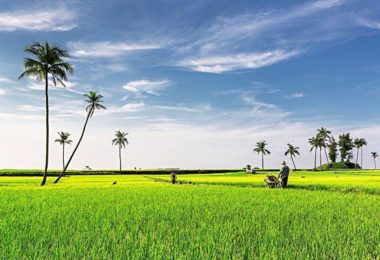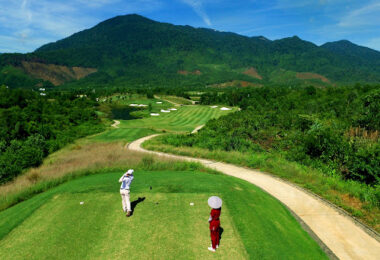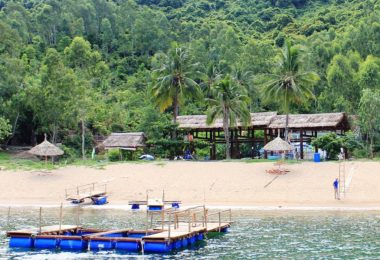Ever wonder when should I avoid while touring in Da Nang? If you are thinking about the sunny sandy beaches, vibrant cityscapes, and delicious food, then this is the place! However, knowing the best time to visit will guarantee that your Danang tours will not leave anything to be desired. Let’s dive into the wonders and occasional woes of Da Nang’s weather.
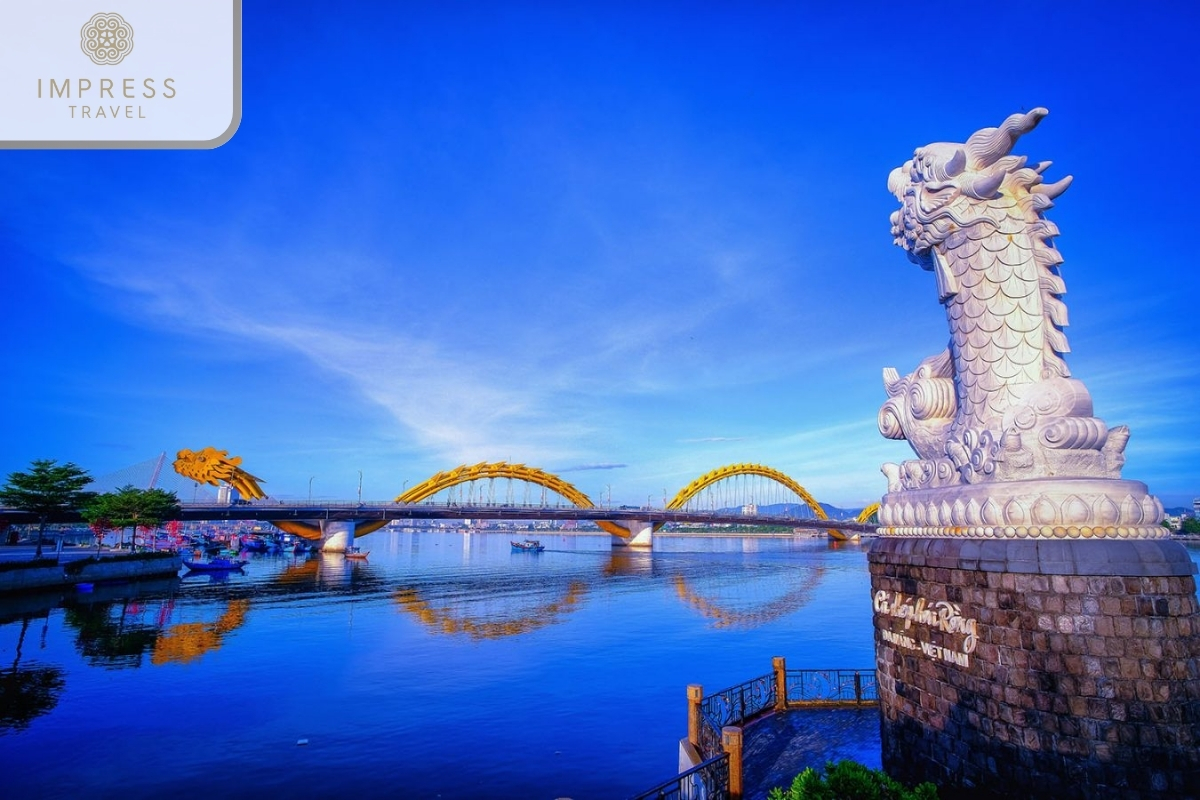
Da Nang City
Overview of Da Nang’s Climate
First of all, let’s talk about the climate. Da Nang is a coastal city with a tropical monsoon climate characterized by generally warm and wet conditions throughout the year. This city experiences two main seasons: the dry season and the wet season
The Dry Season
From January to July, dry conditions prevail in Da Nang. It is sunny with little or no rainfall and comfortable temperatures from 25°C to 30°C. This is the best time for visiting beaches, going around outdoor attractions, and taking up all of the Amazing Danang tours you have been eyeing
The Wet Season
From August to December, the city plunges into its wet season. It is then that the tropical monsoon climate truly comes into its own: heavy rains, high levels of humidity, and, at times, typhoons. Also, the wet season could be quite challenging for tourists visiting Da Nang during this period; on the other hand, don’t worry—all will be specifying what type of answers should be in “When should I avoid while touring in Da Nang?”
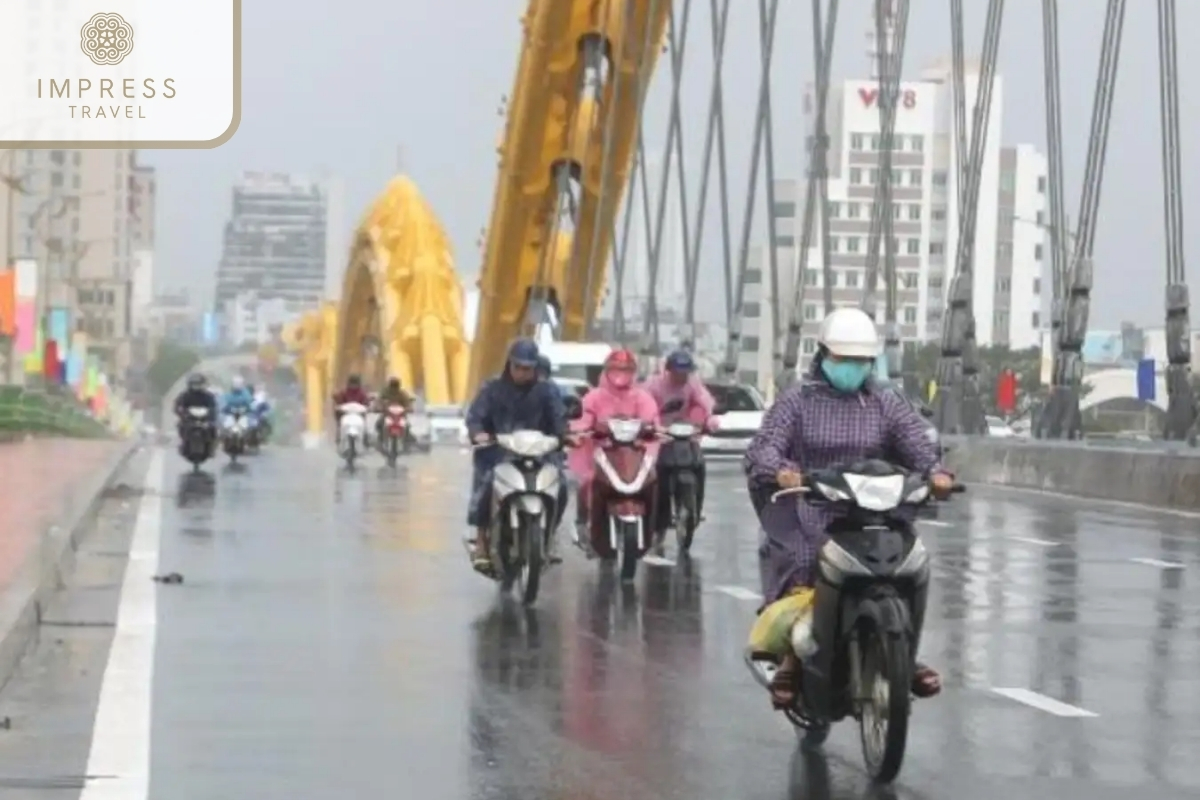
The Wet Season
When should I avoid while touring in Da Nang?
So, when should I avoid while touring Da Nang? September, October, and November are months from which one needs to keep aloof with much caution. Let’s break down why these months can be less than ideal for your Danang tours.
Heavy Rainfall and Potential for Flooding
This is the period when the rainfall in Da Nang is at its highest. The streets start to become full of water, thus traveling is hard. Just imagine having a city tour in such pouring rain with water everywhere—you don’t like the sound of that, do you?
Risk of Tropical Storms and Typhoons
This is also the peak season of typhoons. Tropical storms can bring powerful winds and heavy rain, consequently interfering with traveling schedules or causing unsafety. For example, in 2017, typhoon Damrey damaged a lot and hampered travel. In case you intend to visit during these months, keeping yourself updated about weather forecasts will be very important.
Disruption to Travel Plans and Outdoor Activities
This can seriously hamper outdoor activities like hiking, cycling, and beach outings. Cancellation of many tours and excursions because of bad weather can make your choices limited for going out and about. Such would be a case where you were looking forward to visiting the Marble Mountains or the Son Tra Peninsula, only to find it too slippery and dangerous along the trails
Limited Sightseeing Opportunities Due to Poor Weather
Bad weather may conceal at times the many fine views that make Da Nang famous. Cloudy skies and rain can bring poor visibility, which might further reduce landmark views like the Golden Bridge at Ba Na Hills or the fine beaches of My Khe to merely average, if not poorer, in front of one’s eyes.
Detailed Weather Analysis for September to November
September
September is sharply above at about 330 millimeters falling throughout the month. Temperatures would pretty much remain between 24°C and 31°C, with the climate becoming quite wet and humid overall.
Typical weather conditions in September, as weather-wise can be quite challenging. Much rain is observed and often pours in heavy showers. The weather can seriously affect traveling because of the streets being awash or flooded. Transport, therefore, becomes highly problematic. Outdoor activities become quite less enjoyable because one will have incessant use of raingear
October
For this month, expect the increase in rainfall and storm activity to tail off a bit more. It can reach as high as 530 millimeters of rain, while the temperature remains relatively stable, ranging from 23°C to 29°C.
The reputation of October is mostly that of weather disruptions. The chances of tropical storms and typhoons hitting the region rise high, which may delay travels and put visitors in jeopardy. For example, Typhoon Molave in 2020 caused extensive damage and massively disrupted travel and daily life in October 2020. These storms can result in power outages, road closures, or even evacuations, thereby becoming the hardest time for tourists
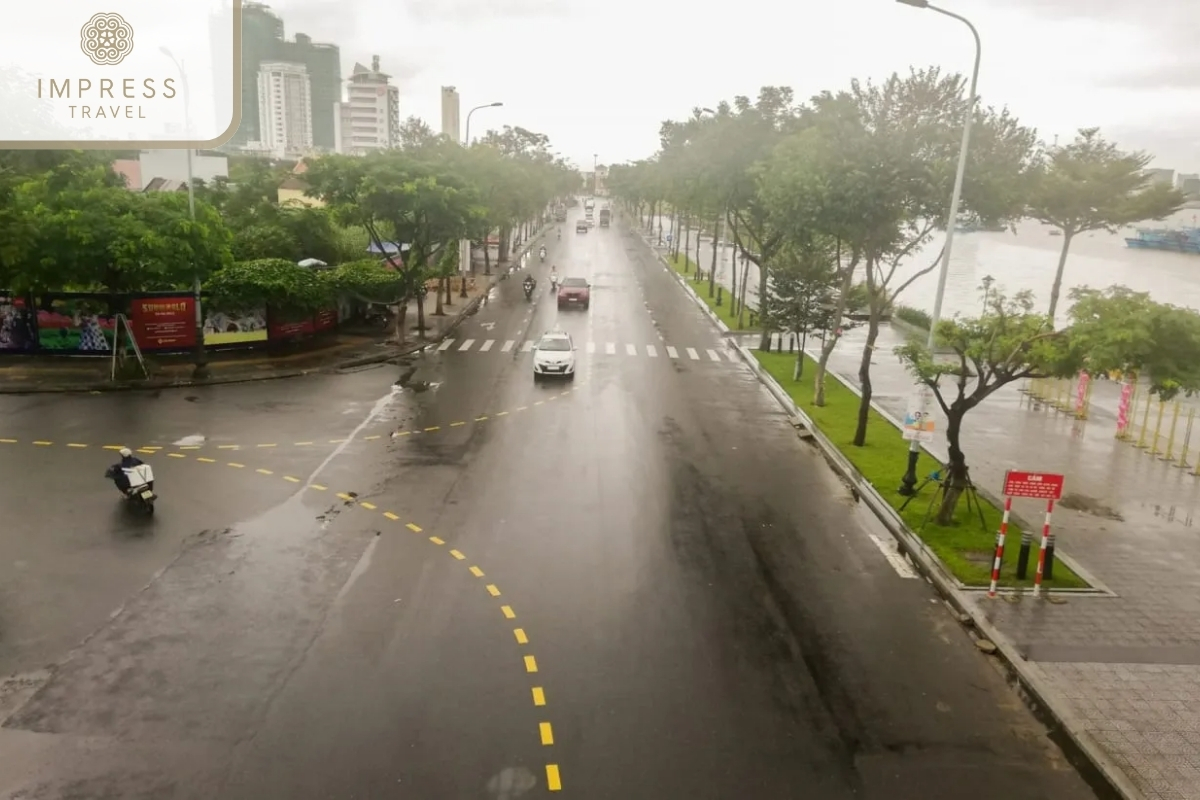
October in Da Nang
November
The wet season continues in November, but it starts to go downhill. At the same time, the rainfall reduces to about 300 mm, while the temperature cools slightly down to a range of 22°C – 28°C. While this rainfall is less about the dry season, it’s still pretty much a wet month compared to the dry season.
The effects on local tourism are notable during November. While the number of outdoor events fewer in number is lesser than in October, there is still a fair chance that many outdoor events will be either canceled or postponed, and the condition of tourist attractions might be less than ideal. Cooler temperatures combined with high humidity do contribute to less comfortable sightseeing. Still, some may prefer this time of year to have a look at the city for a more subdued atmosphere with fewer people around, provided that they pack accordingly
Impact on Popular Tourist Attractions
Beach Activities
The wet season, in general, damps the beach activities. Heavy rain and strong winds usually prompt restrictions on swimming and water sports. For example, My Khe Beach, which is famous for its beauty and activities, often has advisories posted or is closed during this period due to rough seas and unsafety.
Outdoor Adventures
This will affect many outdoor adventures, such as hiking and biking, or simply exploring the beauty that Da Nang itself has to offer. At the same time, paths are slick and dangerous; organizers of quite a few outings may decide to call off the tour for safety reasons. Son Tra Peninsula and Marble Mountains represent two of the favorite destinations that outdoorsy folks like to visit. Access could become difficult due to landslides or storm damage.
Cultural and Historical Sites
Even cultural and historical sites have not been spared by this wet season. This may render places like the Da Nang Museum of Cham Sculpture or other areas in the outdoors, which can burden limited access and closures. Many areas in these sites could get flooded or have a great deal of damage due to heavy rain, thereby warranting closure for repairs. It also renders travel fairly futile as the weather is mostly wet and humid throughout this time, and visitors are bound to deal with mud grounds and a generally wet environment around travel places
Alternatives to Consider
Best Months to Visit
Now, to the good stuff! If you are thinking about When should I avoid while touring in Da Nang? and you seek the best times instead, you’ll want April through July for your calendar. These months offer the perfect blend of sunny skies, warm temperatures, and minimal rainfall. That’s the ideal season for all those Amazing Danang tours planned in your mind! Within this period, temperatures usually stay between 28°C and 34°C—just the right setting for enjoying beaches, sightseeing, and outdoor actions
Indoor Activities
What if you happen to be in Da Nang during the rainy season? Well, simply do not worry, as there are a million cool indoor attractions and activities! The following is a short list of them:
- Museums: Understand the rich history and rich culture of Da Nang at the Museum of Cham Sculpture. It’s a great way to spend a rainy day in the afternoon.
- Galleries: Visit local art galleries, such as the Chandara Fine Arts Museum Da Nang, to enjoy Vietnamese art.
- Cooking Classes: Take a Vietnamese cooking class to learn how to prepare delicious local dishes. It’s one of the most fun and delicious ways you can spend a rainy day.
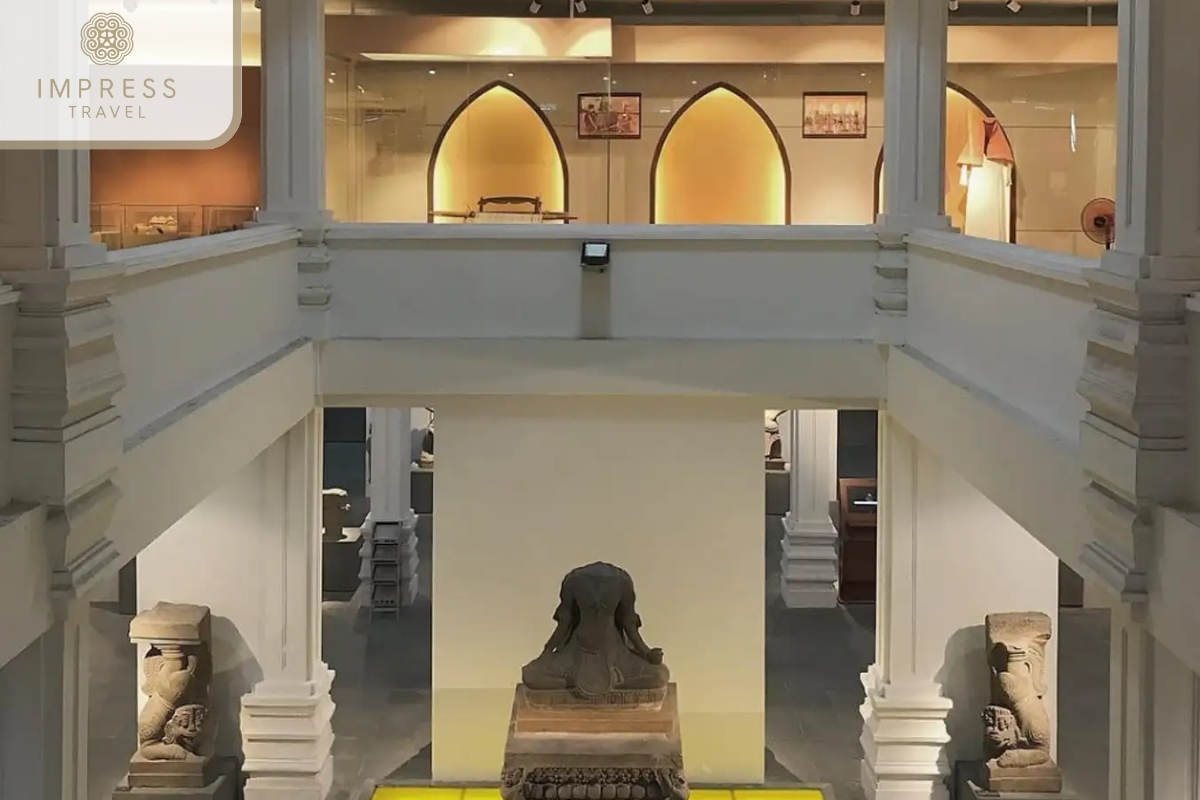
Museums
Festivals and Events
Da Nang also hosts several weather-resistant festivals and events held indoors:
- Da Nang International Fireworks Festival: This falls in the period from April to June, and it is usually set outside the wettest time of the year.
- Tet Festival: In this Vietnamese New Year, usually celebrated in January or February, everything can be found indoors; from traditional performances and games to food.
Preparing for a Trip in the Rainy Season
Packing Tips
One needs to be a little better prepared when traveling in the rainy season. Here is a list of things you should pack:
- Waterproof Clothing: A good raincoat or poncho will let you stay dry.
- Umbrellas: They are compact, easy to carry, and a must.
- Waterproof Bags: This is keeping valuable items and devices from the rain using waterproof bags or covers.
Safety Precautions
Staying safe during heavy rains and storms requires caution. Here’s how you can be prepared:
- Stay Informed: Get current weather forecasts and warnings.
- Emergency Contacts: The contact information of local emergency services should be kept very handy.
- Stay Indoors: During bad weather, it is advisable to stay indoors and reduce travel to a minimum
Adjusting Travel Itinerary
One has to be flexible while traveling in the rainy season. Here are some tips:
- Flexible Plans: Be prepared to adjust the plan according to the weather.
- Travel insurance: This may be applied to protect against any unforeseen changes or cancellations due to weather
Conclusion
The most memorable way to enjoy a good experience is by creating your trip around the question, When should I avoid while touring in Da Nang? In summary, avoid heavy rainfalls and probable storms in September, October, and November. Instead, aim for the dry season from April to July for good weather and enjoyable Danang tours. Keep suitable attires and flexible planning if you are to find yourself in Da Nang during the rainy season. Good traveling, and may it be that your adventure in Da Nang will never be forgotten! Don’t forget to regularly follow our IMPRESS TRAVEL for more interesting information about traveling Danang to and to book Danang Tours at the best prices.


































